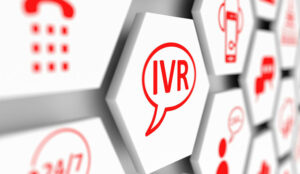Vance Clipson of Nuance discusses how organisations can optimise their IVR systems with new technology, giving advice directly to government agencies.
Despite the public’s prevalent use of websites, mobile applications and social media to access information and conduct business, phone calls are still a primary link to government services.
Although government entities have long used interactive voice response (IVR) to alleviate the burden on call centre agents and route calls more efficiently, citizens are weary of antiquated call systems that rely on touchtone input and outdated speech recognition.
They have become accustomed to the modern voice experiences they encounter with banks, airlines and in their home, and they expect the same conversational, convenient, personalised and intuitive interactions from government agencies.
Artificial intelligence (AI), natural language understanding (NLU), voice biometrics and other innovations are revolutionising self-service.
Whether a citizen wants to pay property taxes, schedule a doctor’s appointment, check the status of a disability claim or enquire about a court date, modern, conversational IVR can intelligently route them to the right self-service application or agent while reducing agent call volume, improving the citizen experience and increasing efficiencies.
In addition, organisations can realise operational efficiencies that reduce overtime, improve employee retention and more.
Modern IVR solutions address the challenges of dated speech technology and enhance citizen self-service by using natural, language-based voice technology, AI and other innovations to make interactions faster, cheaper, smarter and more human.
1. Create an Intuitive First Point of Contact
Automatic number recognition and voice biometrics are two modern IVR tools that streamline the initial contact process, enhance the caller’s experience, reduce costs and strengthen security.
The Australian Taxation Office (ATO) uses voice biometrics to enable a single credential for authentication across multiple channels, including its call centre, IVR and mobile applications. With these changes, ATO reduced the average call time for repeat callers by 48 seconds.
2. Deliver Natural, Conversational Interactions
Thanks to breakthroughs in AI and NLU technology, modern IVR allows callers to interact with the system using their own words as if they are conversing with a human being.
New York City’s 311 services (NYC311) use their modernised IVR to significantly enhance self-service options, reduce wait times and streamline caller interactions with agents.
NYC311 has increased agent availability by up to 25 percent and call centre capability by more than 20 percent during high-demand days and emergencies.
3. Make Every Call Personalised, Predictive and Contextually Aware
Modern IVRs use AI to analyse a caller’s browsing history, transactions, scheduled appointments, past interactions with the call centre and other back-end information to anticipate the reasons for a call and deliver accurate, relevant and easily understood information.
Imagine greeting a caller with a personalised message: “I see your licence is expired and that you also have two unpaid parking tickets. Are you calling to pay the fines?”
4. Adopt an Omnichannel Approach
Modern IVRs that incorporate omnichannel capabilities allow callers to transfer between IVR and digital channels flexibly, seamlessly and securely — without having to repeat information.
Work done in one channel is automatically reflected in other channels, enabling seamless transfer from the IVR to a digital experience. So picture this engagement: “Okay. A live agent can help you with that; the wait time is about five minutes. Or you can chat with an agent right now via text message. Would you like to chat instead?”
Government organisations require improved service delivery, lower call centre costs, strengthened security and compliance, and the ability for all citizens to have equitable access to government services.
Author: Nuance
Published On: 30th Apr 2019 - Last modified: 26th Feb 2025
Read more about - Expert Insights, Call Handling, IVR Solutions, Nuance





































